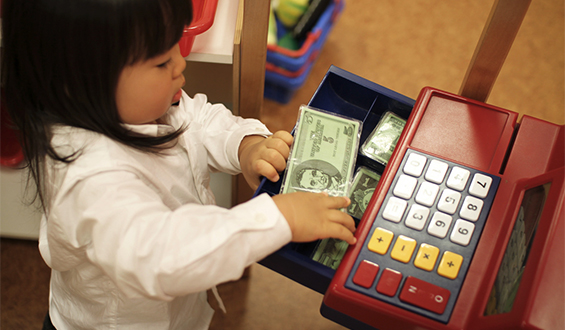Education
Parents Encouraged to Teach Their Kids About Money, Finance

Educators and parents, politicians and lobbyists are discussing the issue of who is responsible for teaching children about financial literacy, and at what age this education should begin.
Despite 43 states in the US requiring courses on personal finance and all 50 requiring economics courses to be included in K-12 standards, fewer require those standards to be implemented by districts (35 and 45 respectively), and even fewer require courses to be offered in high school (19 and 24 respectively). In addition, just 17 states require high school students to take courses in personal finance courses and 22 states have economics requirements, while only 6 states require students to be tested in personal finance and 16 require testing in economics.
Many experts state that reliance on public education may not be enough. Instead, it is suggested that parents begin the discussion at home. While not everyone will follow the same strategy, Jayne A. Pearl, the Amherst, MA-based author of Kids and Money: Giving Them the Savvy to Succeed Financially says parents should turn daily activities into learning experiences for children. She tells parents to discuss how money is used with children during trips to the bank, store, or the ATM. She says this can begin when children are very young, around 2-3 years old, as they play imaginary games such as pretend store or restaurant.
While very young children may not understand the value of money, they can begin by learning the names of the coins. Anna Attkisson writes for Parents that children can learn their names through a coin identification game, matching each coin to its shape outlined on a paper. Another suggestion is to set up a play store in the living room and to play with your child by exchanging play money for goods.
As children get older, around four or five, they can begin to help with real shopping trips. One suggestion is to ask with help clipping coupons. While at the store, children can hold the coupons and look for the corresponding items to place in the cart. This is the perfect opportunity for parents to begin a discussion on saving money.
It is suggested to begin giving your child an allowance between the ages of 6 and 8, as it is at this age that children can begin to distinguish between wants and needs. At this point, parents can bring their child to the bank and open a savings account in their name. As parents encourage their child to make regular deposits, discussions can begin on the topic of interest and how banks pay people for saving money.
“Whatever you choose to give your kids, the amount matters less than the conversation you’re having with them about money,” said financial professional Brian Pearson, from American Benefits Exchange. “Start with a dollar a week or so for each year of the child’s age and divide the money among three containers: save, spend, and give. This is like a mini-version of an adult budget. You’re teaching them the basic foundation of finances.”
As children enter the teen years, they can begin to learn about the stock market and investing. This can be done through pretend investments in companies that a child may already know about, such as Disney or Mattel. Once a stock is chosen, family members can read the paper or watch the financial news as an activity and discuss how the stocks fluctuate.
Author information
The post Parents Encouraged to Teach Their Kids About Money, Finance appeared first on Education News.

Comments (0)